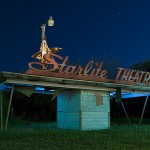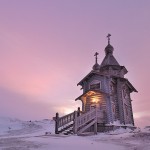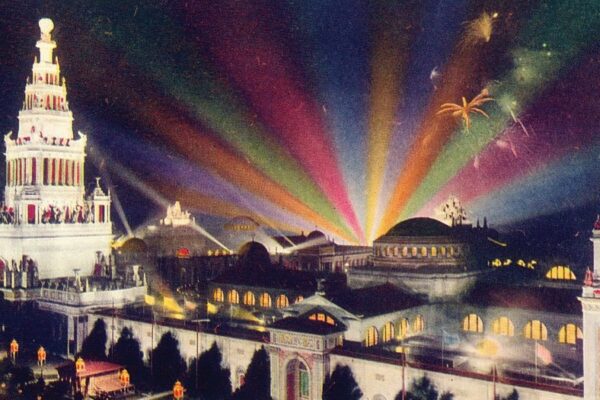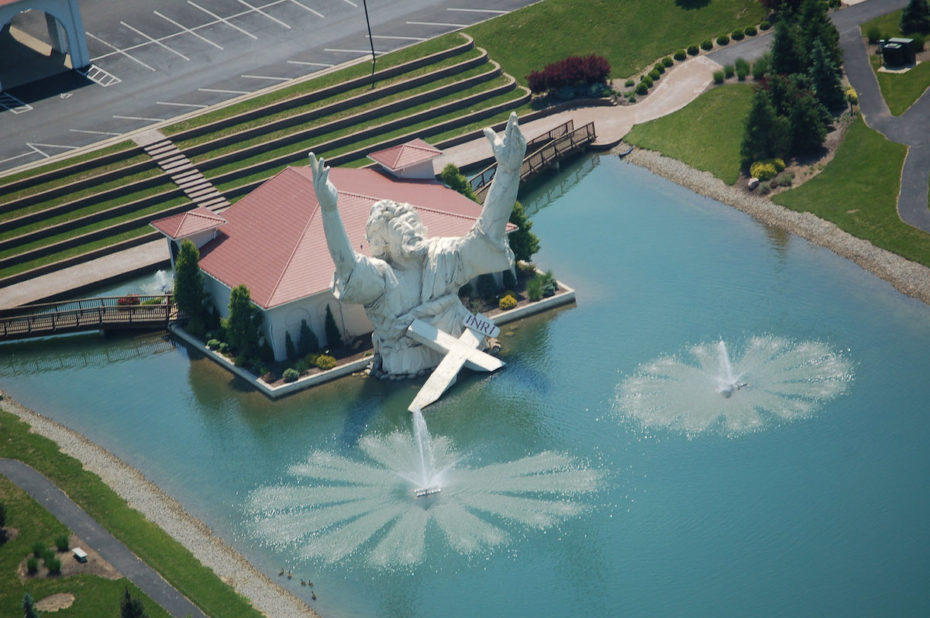
They called him Big Butter Jesus – Sweet Cream Jesus. Sometimes, Touchdown Jesus. The nicknames for the massive statue outside Monroe, Ohio’s Solid Rock Church may have varied between dairy and football allusions, but its purpose was unflinching: bring in the people. With his arms outstretched to the heavens, conveniently off Ohio’s Interstate 75, the 62-foot prophet wasn’t the guardian of just any church. He spoke for every American megachurch, whose halls welcome thousands to worship every week. From drive-in churches, to midcentury Googie towers right out of Star Trek, we decided to look into how their designs and aesthetics have evolved with pop culture…
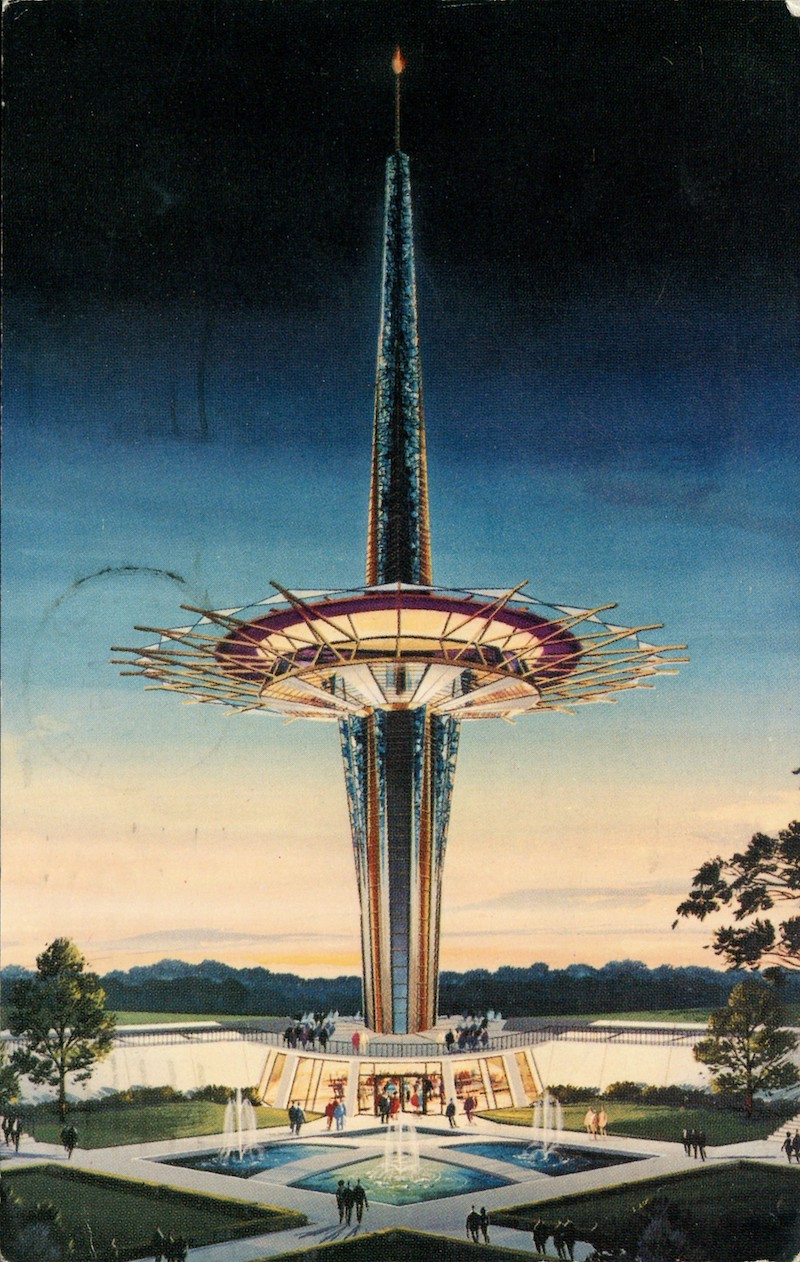
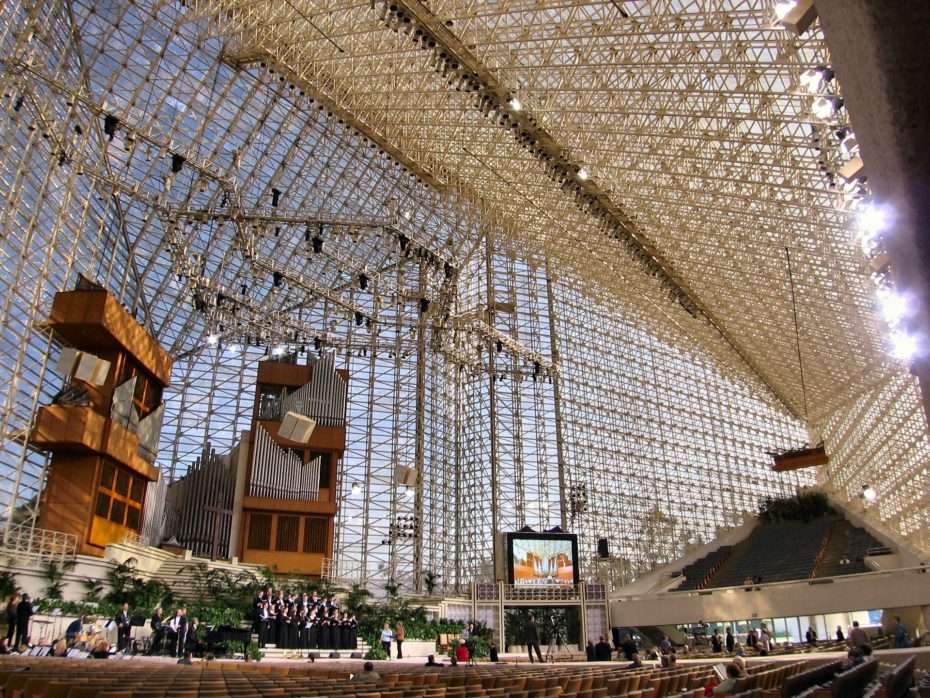
To be considered a megachurch, one’s parish must be able to accommodate 2,000 believers. Which sounds like a lot, but consider the fact that Paris’ Notre Dame could squeeze 9,000 people in its halls (the Butter Jesus Church holds over 4,000). Size isn’t everything when it comes to obtaining the megachurch aesthetic. You also need the flashy lights, the kitschy decor, that evangelical je ne sais quoi. To paraphrase Justin Stewart, you know it when you see it. That being said, a substantial following is essential…
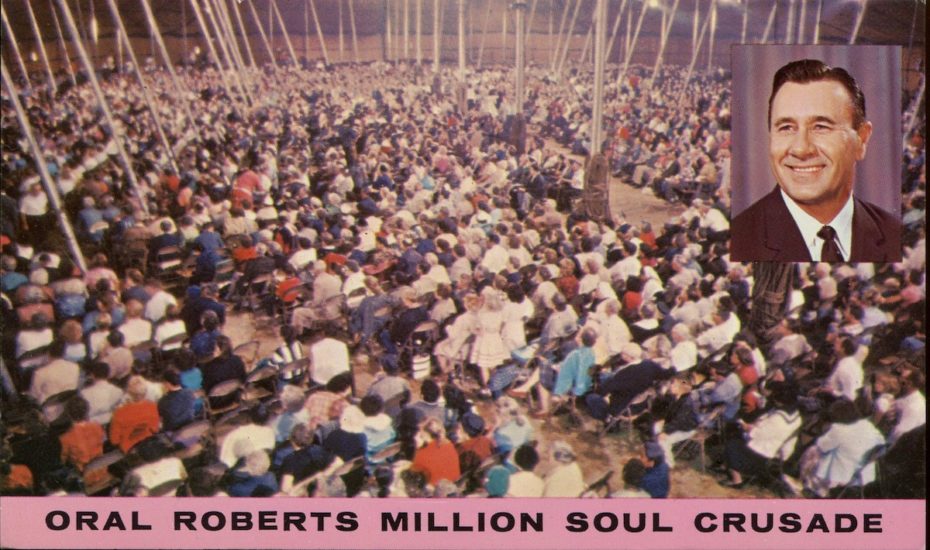
The followers always predated the “mega” aspect of the churches, which are always evangelical. In fact, one could argue that the references to mass baptisms (of literally of thousands) in the New Testament were very megachurch-y. In any case, megachurches are about as American as apple pie. Consider that Falls Church in Virginia, an Episcopal congregation, has been going strong since 1734. Throw in the power of radio and television, and you’re given a force to be reckoned with à la Oral Roberts, the pastor who launched 300 “crusades” of worship with his followers in a large mobile tent. In the course of his life, he claimed to have laid hands in prayer on over 2 million people. None of it would have been possible without radio or television exposure.
Folks were letting Jesus take the wheel, and preferably, to the drive-in church. (Our full article on them here.)
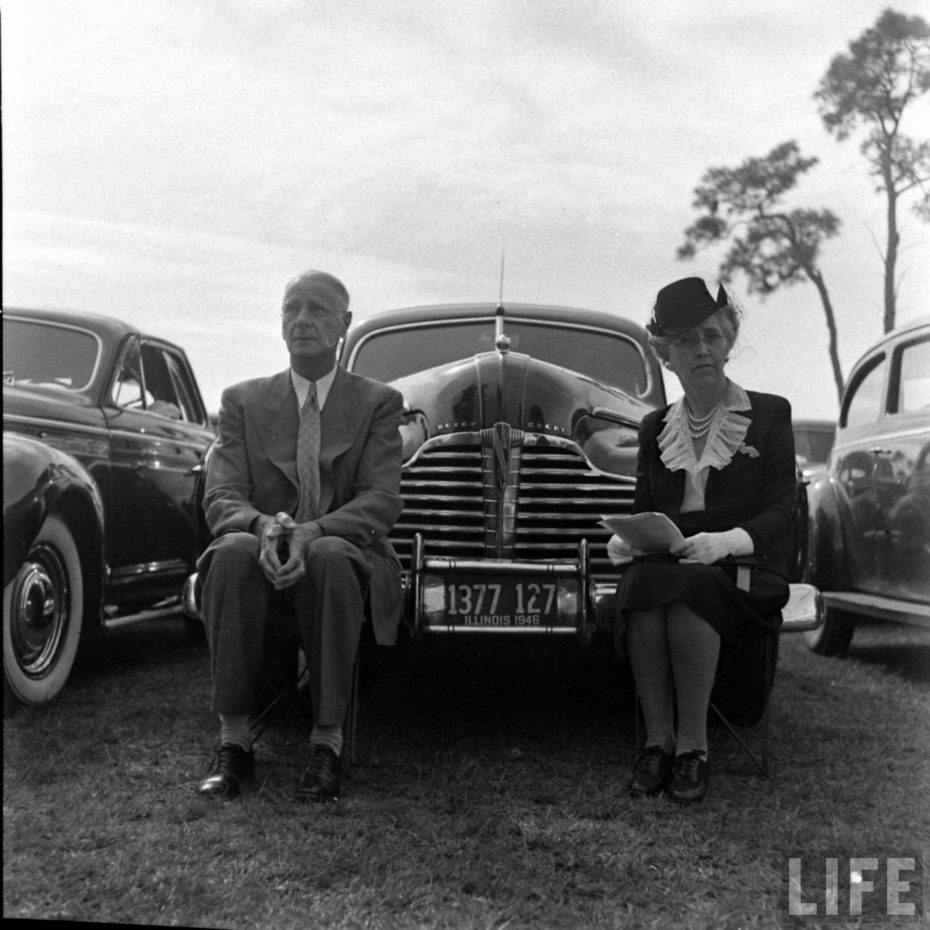
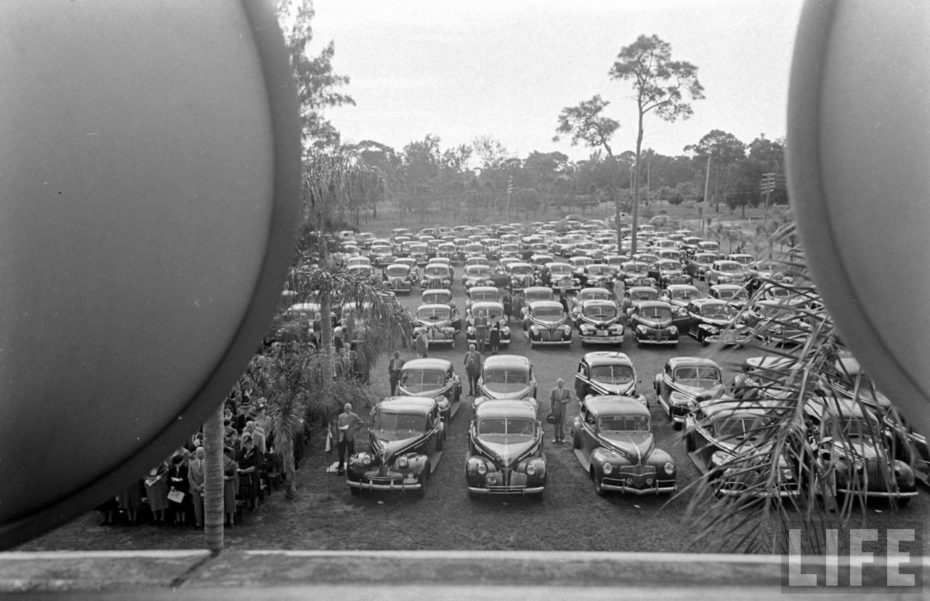
This was the rise of middle class America. The post-war economy thrived, along with the model of the nuclear family. Presidential debates were televised. The Jet Set era had arrived, and space travel gave way to science fiction day dreams. Every bit of these flights of fancy found their way into the branding of the megachurch…
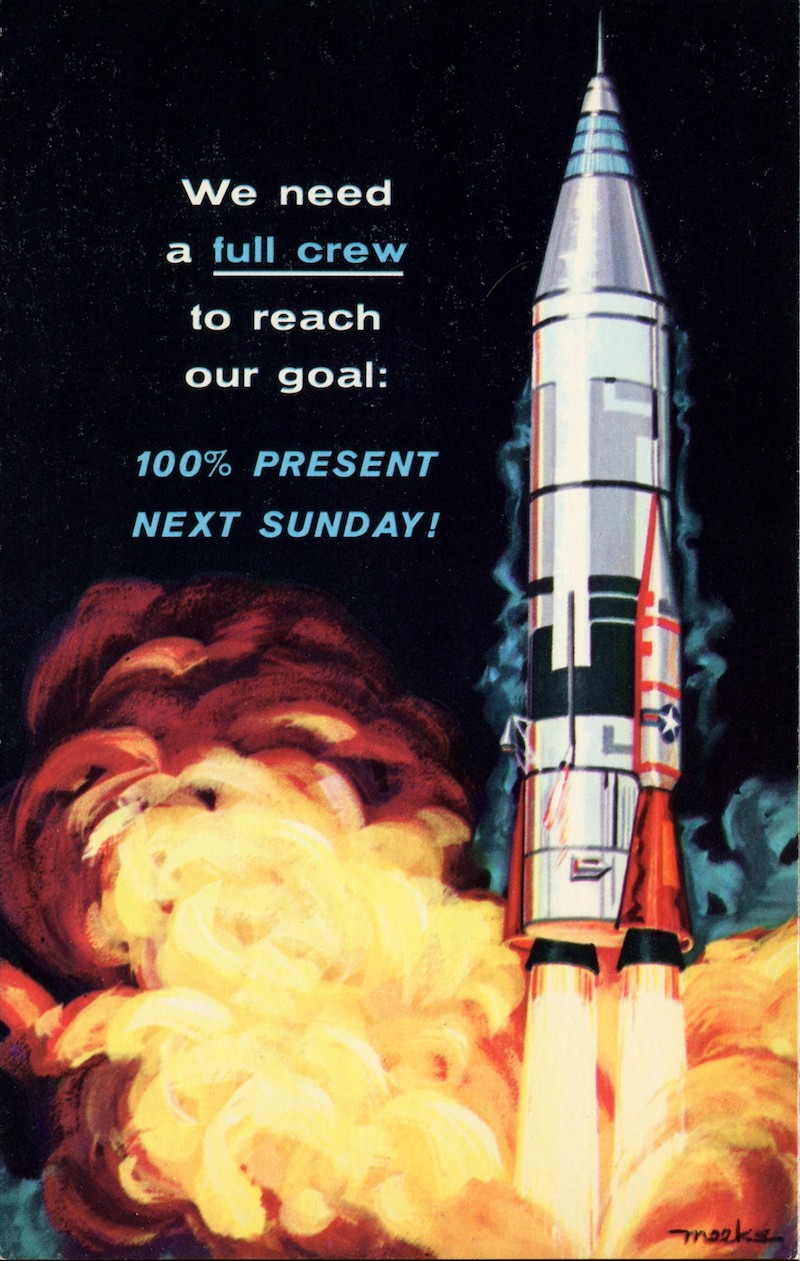
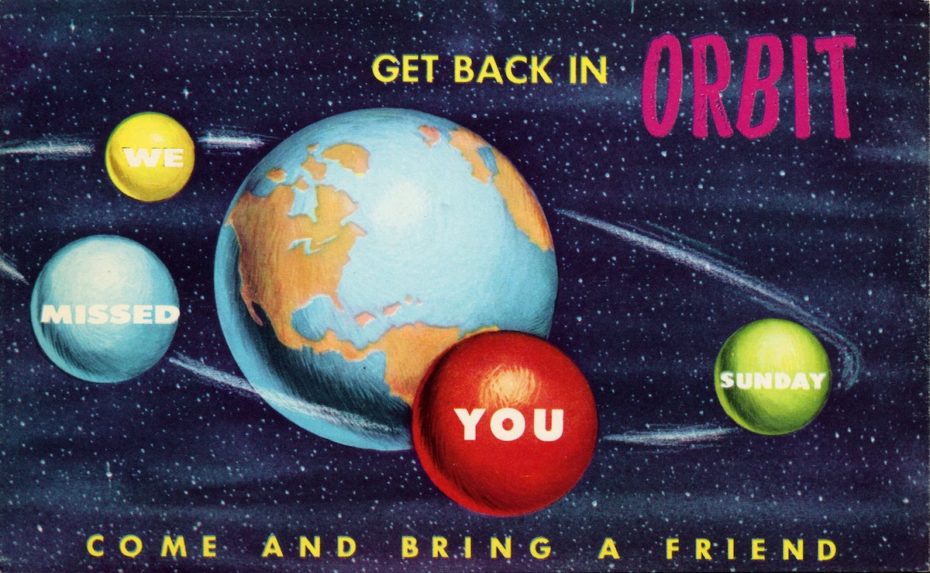
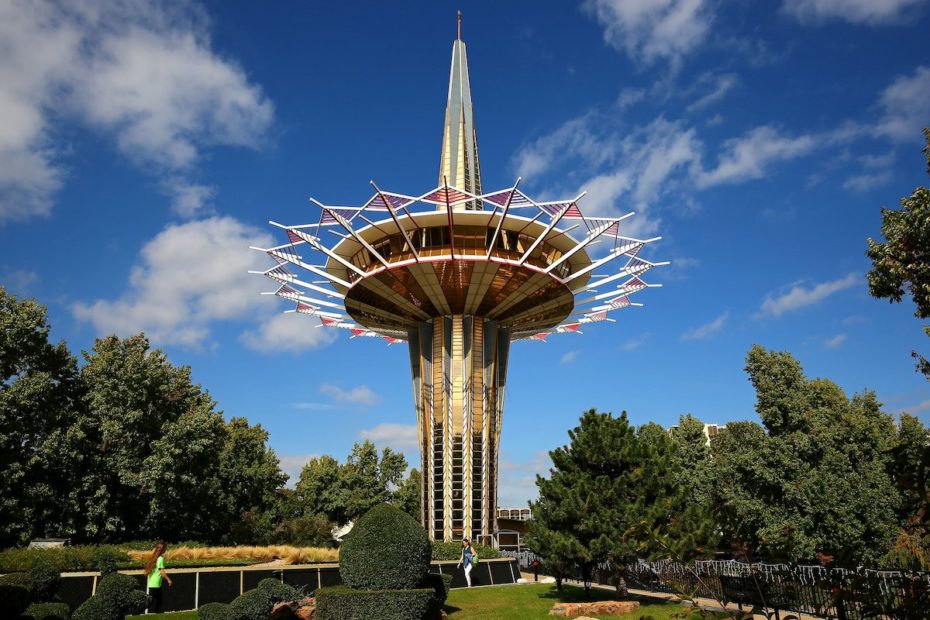
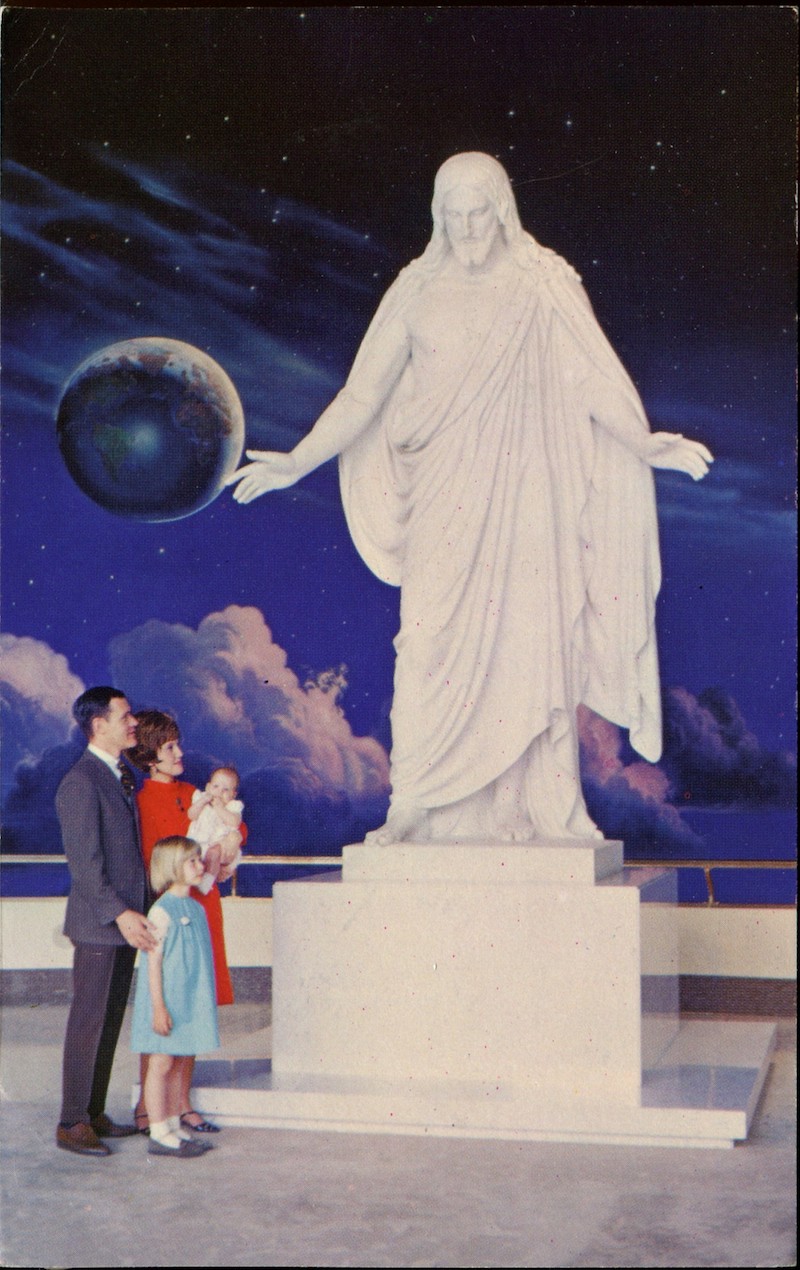
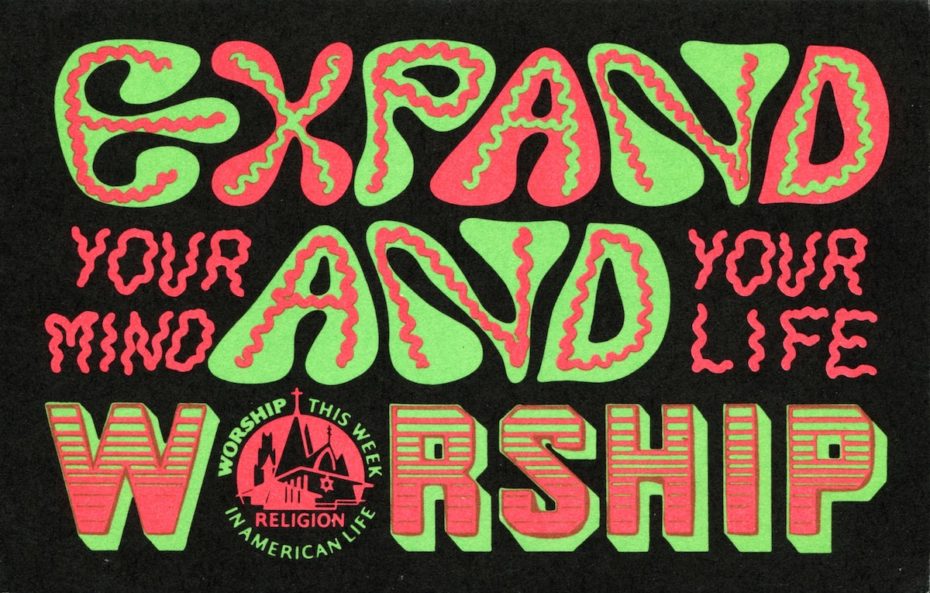
Heck, it even had its hand at 1960s psychedelia and you bet the mid-century legend himself, Frank Lloyd Wright, had a go at church architecture…
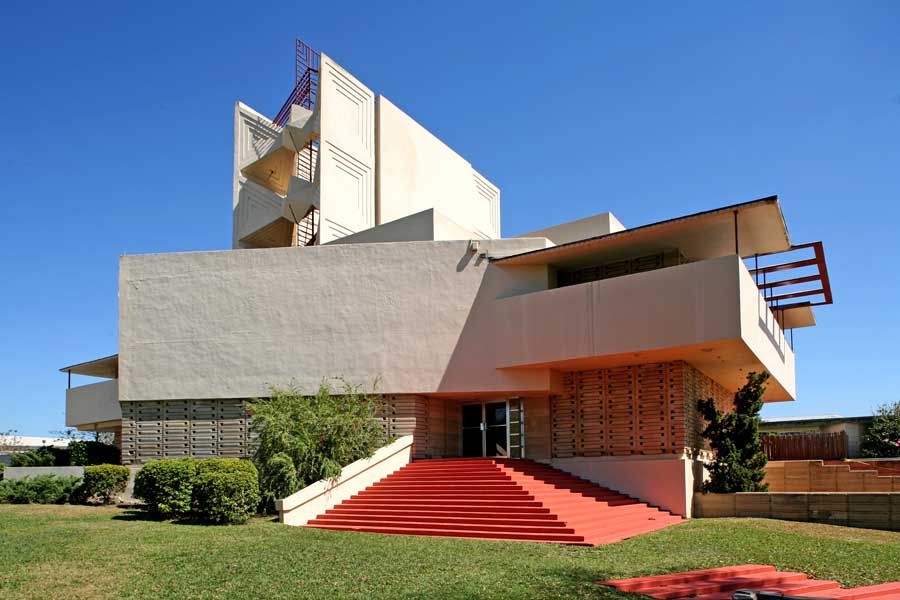
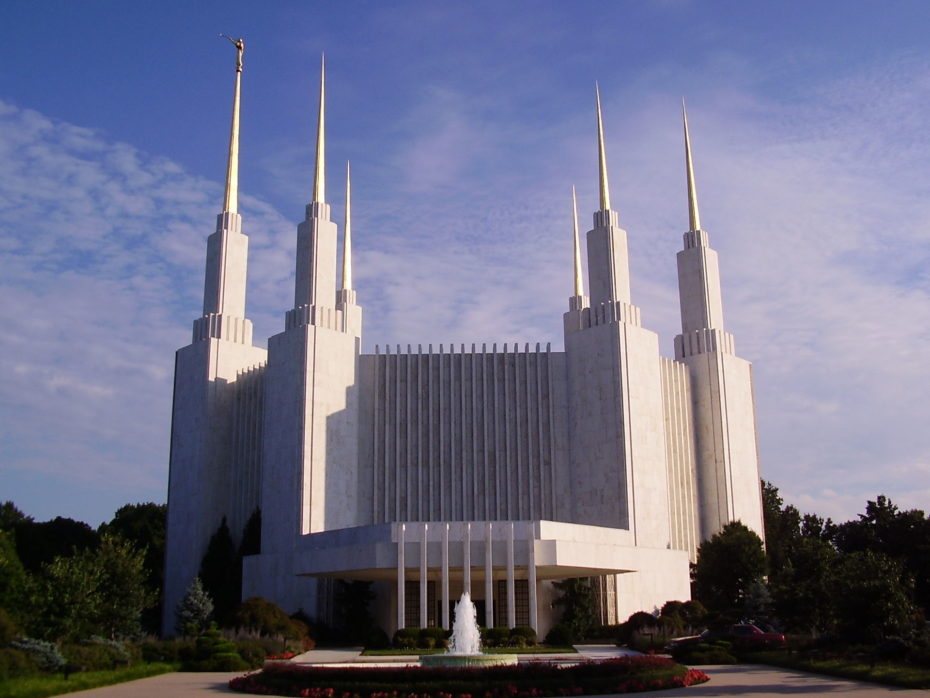
There’s a lot of great literature out there about the churches’ reasoning behind the mounting materialism of megachurches. In Anne C. Loveland and Otis B. Wheelers’ From Meetinghouse to Megachurch: A Material and Cultural History, we learn that megachurches are often built horizontally to reflect that “the [modern] church’s mission is to the world – not to itself.” We learn about the symbolism applied to every detail of construction, from cross-shaped roof supports, to the curious story of one church’s waterproof materials. “The company was the Grace Ice and Water Shield Co.,” explains the church’s pastor, “The insulation [had] the word ‘Grace’ imprinted in letters on each sheet. I could see the word ‘Grace, Grace, Grace, Grace’ hundreds of times covering the roof.” Call it fate, luck, or a self-fulfilling prophecy. Megachurches own that grandeur – but only, they say, because it is the grandeur of the Lord.
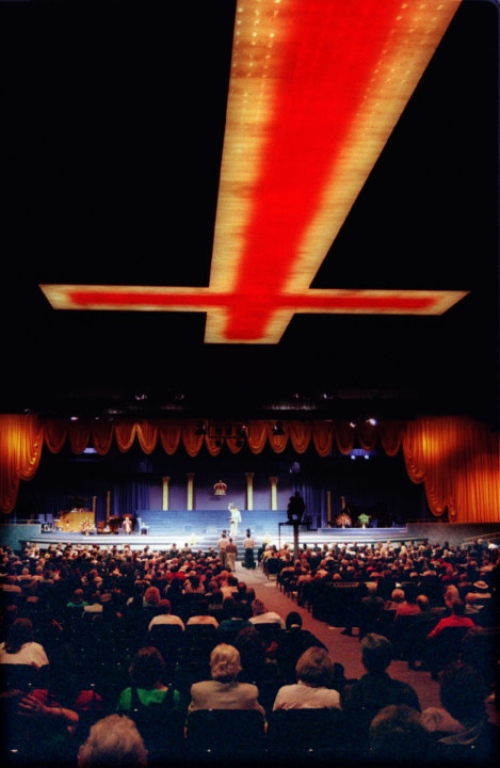
But we’re not here to dive into an ethical debate. We’re here to get our kitsch fix at the likes of Cadet Chapel in Colorado, and its kaleidoscopic interiors, or to stare into the sparkle of Texas’ Crystal Cathedral, which began in the 1950s and was completed in the 1980s. In fact, those two eras bookend one another nicely on the subject of megachurches, whose true peak (in matters of aesthetic excess) was the 1980s and ’90s.
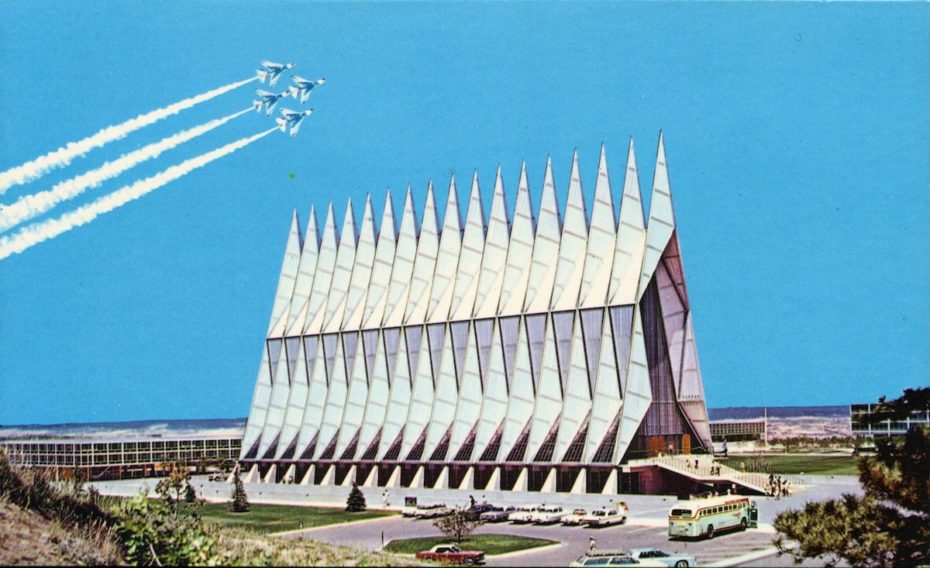
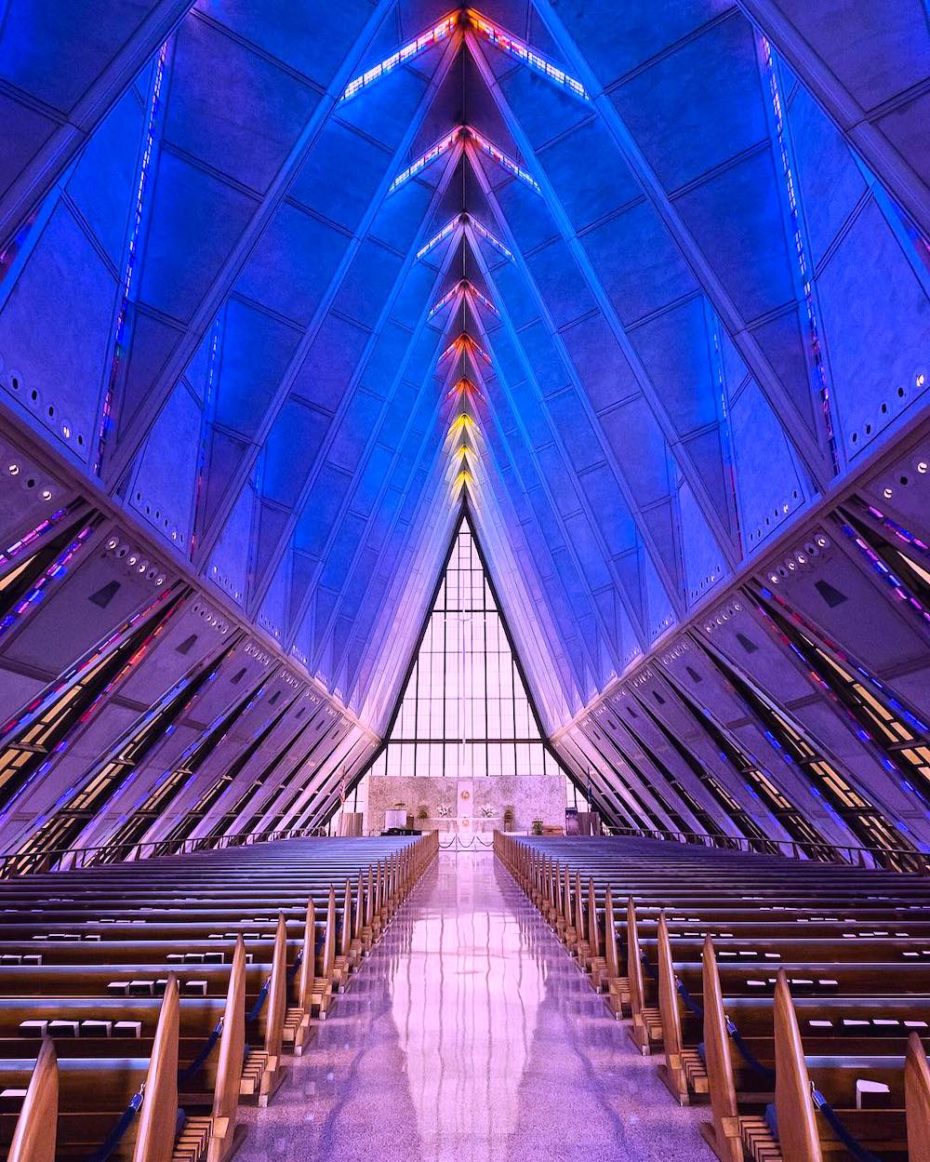
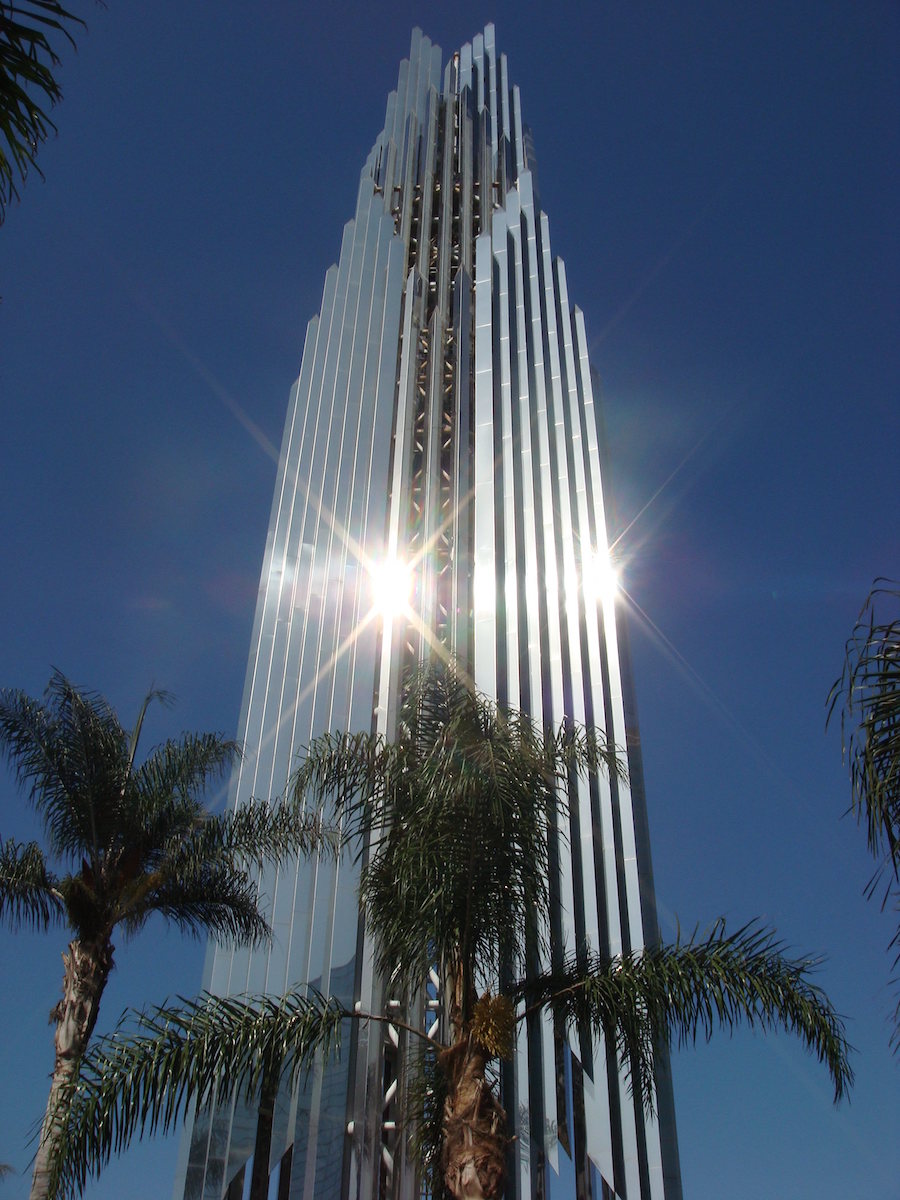
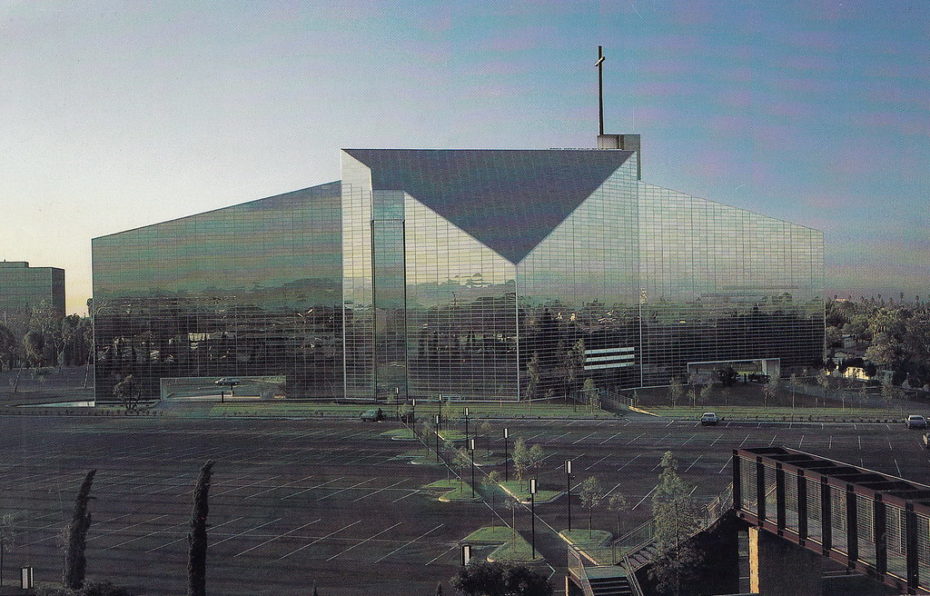
The largest megachurch in the country is Lakewood Church in Houston, Texas, which fits 40,000 believers every Sunday in an old sports arena:
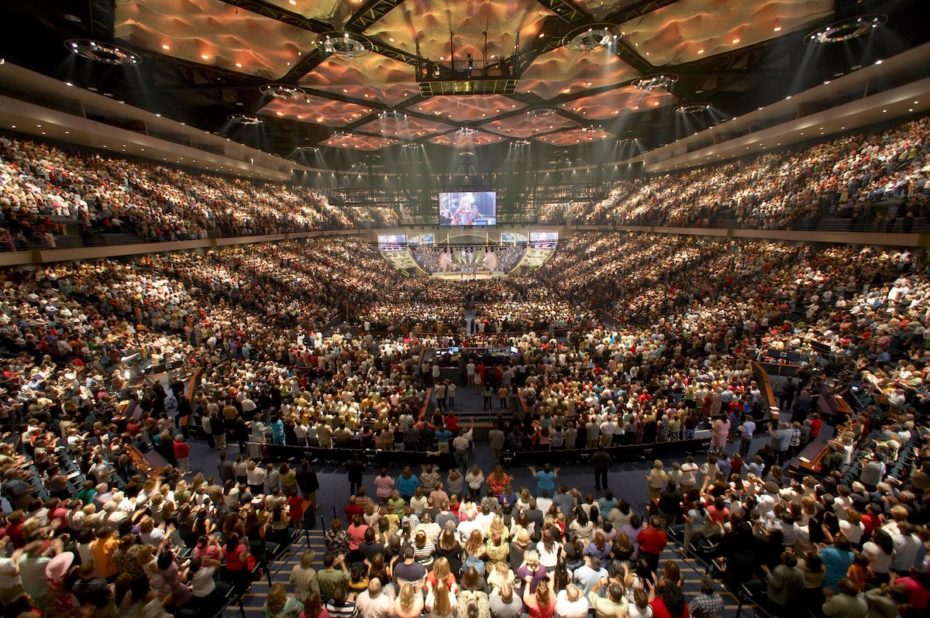
That’s the level of mega we’re at these days. In fact, the largest evangelical church isn’t even in the US. That prize belongs to Seoul, South Korea, whose “Yoido Full Gospel Church” rakes in 200,000 people on a Sunday. Otherwise, US congregations have also been growing online. Every megachurch worth its salt has its own Instagram, and Lakewood’s own Joel Osteen has 3.6 million followers on the ‘gram. What a long way we’ve come, from the drive in to the digital…
Still curious about megachurch culture? Check out HBO’s show, The Righteous Gemstones, starring John Goodman:
Oh, and an update on Big Butter Jesus. Unfortunately, he was struck by lightning in 2010, and left looking a lot more like Arnold Schwarzenegger at the end of Terminator:
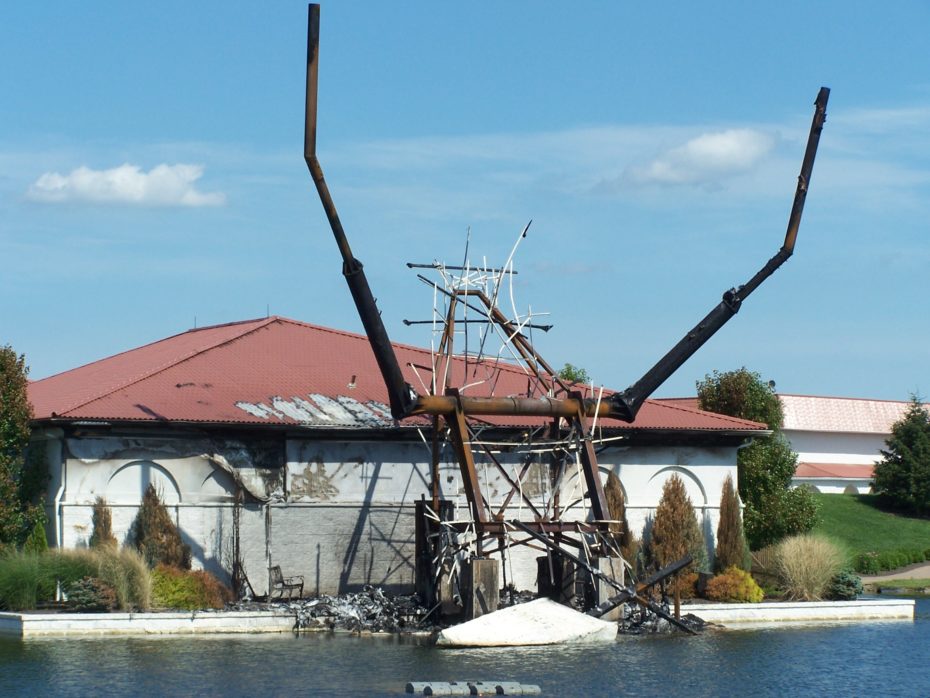
He has since been replaced by another Jesus statue. In his memory, we suggest that thou rock out to this song about ‘ole Sweet Cream…


